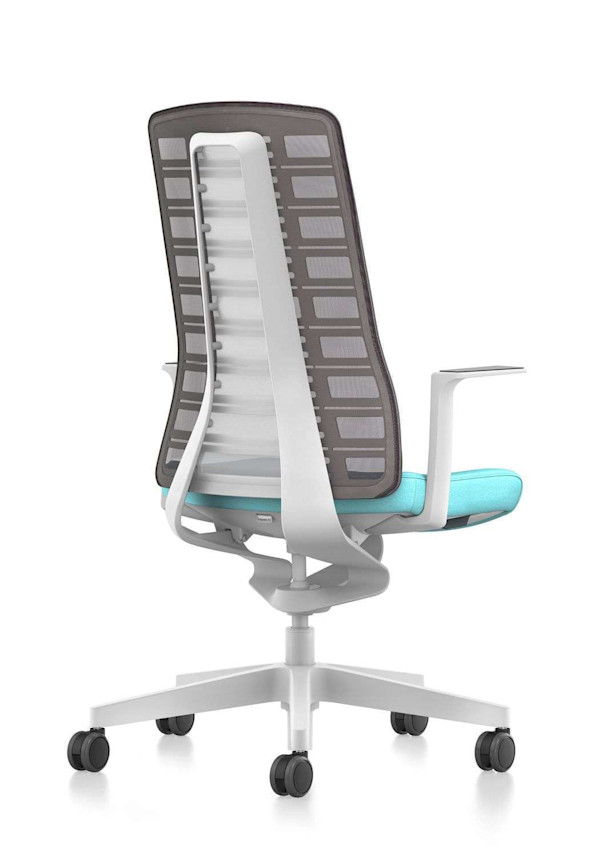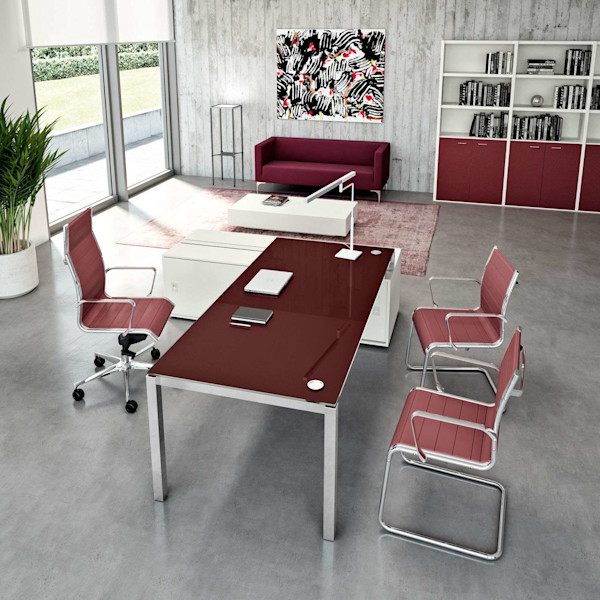Office Chairs: The Material Matters

When selecting office furniture, the first thing considered is usually visual aesthetic. Take office chairs for example. They set the tone of a room as well as being the piece of furniture that takes the most abuse. So we ask, does the chair fit with the overall décor? Does an executive chair show off the prestige of the office in which it sits? But there’s more to it. When it comes to desk and conference office chairs, materials matter for more than how they look.
Let’s begin with a few important questions and answer them as we look at different materials:
How does the material feel against the skin?
What kind of support do my employees and I need?
Is it difficult to clean?
How long will it last?

Leather and faux leather
If a material causes the skin to stick to it or becomes scratchy, it can pose a problem. While leather and faux leather do have the sticky factor, their smooth texture, and the suppleness of real leather, are not scratchy in the least. Consider next the dress code. If your employees tend to wear long pants, stickiness may not be a problem. Support of leather or faux leather office chairs is more a question of the makeup of the cushions, either foam or fluff, rather than the material itself. Cushions tend to be softer, but can over time flatten and render pain in the pressure points. Good quality stuffing within the leather will prolong the chair’s support structure. Leather, faux leather, and vinyl are relatively easy to keep clean, usually with a swipe of a wet washcloth. However, with stitching details that mark a leather or faux leather office chair’s decor, spilling on the seams can be more difficult to rectify. Over time, leather and faux leather will dry and crack if not properly cared for, which can lead to scratches where the tears dig in. Leather can be oiled, prolonging its life, but faux leather doesn’t have that option. Choosing quality faux leather, soft and malleable, ensures it will last a while before cracking.

>> These fabric lounge chairs add comfort to any quick meeting.
Fabric
Like leather materials, fabric is a good choice for the feel against skin, and can be stretched over a variety of cushion options for support. The endless colors and fiber blends give an array of visually pleasing options. Consider as well how the fabric chosen conducts body heat to ensure your office chair choice won’t be unbearably hot. As with leather products, fabric chairs offer as much support as the cushions they cover. However, the question of cleanliness becomes a much greater concern. Fabrics cannot usually be slipped from the chair to be laundered, and while they don’t tend to have the same issue as leather seams, if a spilled drink is not properly cleaned, mold could become a problem, shortening the overall life of the chair. However, they are durable, and with today’s fabrics, treating them with a stain-resistant spray (if they don’t already come pretreated) can help keep them clean. Fabrics don’t risk cracking, either, so they are a good option for the office chair long game.

>> The mesh office chair is popular due to its ergonomic advantages.
Mesh
Interestingly, mesh is a breathable option of office chair seating that doesn’t tend to stick to skin, and boasts a variety of unique designs. However, lower quality meshes have individual fibers that can split and fray, which poke the sitter in all manner of uncomfortable ways. Mesh can be used to cover cushions, stretched over plastic or metal frames, or used as suspension support, so its range of ergonomic mesh options are many. It can also be quite malleable, molding to the sitter’s body in ways that provide almost customized support. Unfortunately, keeping a mesh office chair clean is difficult due to the tiny grooves that make up the material. The inability to keep mesh clean can also change its elasticity, making it prone to stretching faster if not properly cared for. As with any chair, the higher quality you choose, the longer it will last. Mesh stretches, and while at first this is a positive, molding to the sitter’s frame, over time that stretch continues. So check the quality of the mesh before making your purchase with a mind toward the overall lifespan.

>> Plastic or wood tables are perfect for training or break rooms.
Plastic or wood
These materials’ surfaces may not irritate with scratches, but as the smoothest of the options, they will be sticky. They are also the most receptive to adding a cushion (perhaps with washable, removable fabric) so sticking to the office chair material is not as much a pain point. Wooden and plastic seats and seat backs may not be the softest of options, but because they can be contoured for curves, they can still be among the most comfortable. Their rigidity promotes proper posture, and they will never lose their shape. Cleaning them is also a snap. Wipe up spills or even inadvertent pen markings with a little elbow grease and a damp cloth. The best feature of plastic or wood? They last forever. If you have the chair molded to your specific measurements, it can absolutely be the last office chair you ever buy.

>> Isn't it time you spent your work day in the right chair?
Your seat is where you spend most of your day. Keeping these questions in mind will help you choose the materials that work best for you and your staff. You’ll end up with chairs that are not only beautiful, but are functional and longer lasting, and your employees will thank you for keeping their comfort in mind.



